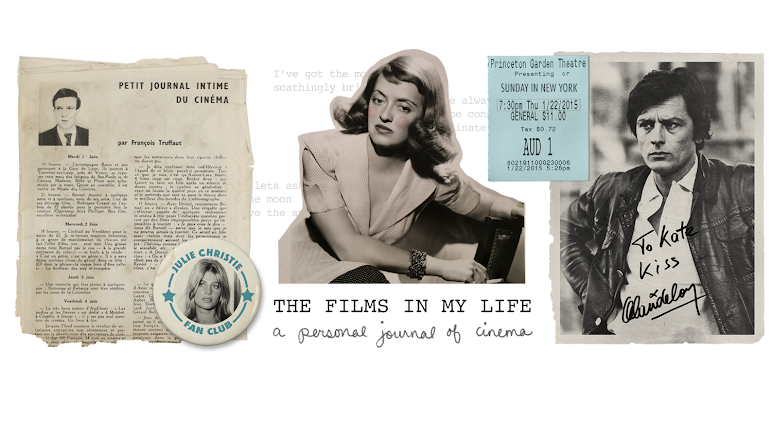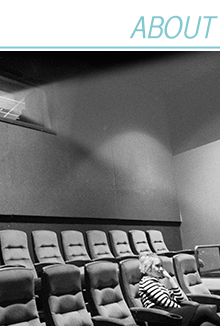
"Through Pennsylvania Station one entered the city like a god. One scuttles in now like a rat." - Vincent Scully
If you've entered New York City in the last 50 years you've likely scuttled in like a rat through Penn Station. There are little remnants of the structure that once stood there -- the granite eagles between 31st and 33rd street, and some brass and iron railings in stairwells -- but it's difficult to fully imagine the grandeur and majesty of the original Pennsylvania Station. Which is why it's such an absolute delight to see it in all its glory in the beginning and ending scenes of the 1964 film Dear Heart.

Production for Dear Heart began on October 2, 1963, just four weeks before demolition started on the building. You can see the light pouring into the terminal, and catch a glimpse of the almost-10 feet tall statue of Pennsylvania Railroad President Alexander Johnston Cassatt, looming over Glenn Ford's shoulder. There's the Coca Cola digital clock, the incoming baggage check, and the souvenir shop. Giant arched windows and beautiful stonework. You can see it all in these scenes.

According to Lorraine B. Diehl, the author of The Late Great Pennsylvania Station, you can spot some broken and covered windowpanes in the ending scenes. Although The Daily News reported in November 1963 that the Penn Station scenes were running behind schedule, Dear Heart ended their on-location filming on October 3rd. And one thing is for certain -- Dear Heart was the last movie to ever be filmed in the original Penn Station. By the time the movie was released in December 1964, the grand and glorious Penn Station was no more.

In Mary Wickes: I Know I've Seen That Face Before, Steve Taravella writes that "Penn Station was razed immediately after filming and replaced with today's soulless station of the same name." After this, most movies would have to film in Grand Central Station if they wanted to capture a New York station with cinematic appeal. In fact, it was the destruction of Pennsylvania Station that saved Grand Central. Less than two years after the demolition, spurred by the loss of such a beautiful historical landmark, New York City enacted the Landmarks Preservation Law.

Movies are like time capsules. When the crew of Dear Heart rolled into Penn Station in October of 1963 they might not have realized that they were preserving a small piece of American architectural and rail history. They may not have realized that their movie would bookend an era of rail travel, a vivid and faithful relic of a way of life that is long gone. But by creating this piece of art, they also preserved a piece of history for us to look back on years later.
We should be thankful for movies like this, filmed on location in locations that no longer exist. We may now scurry in like rat, but by watching Dear Heart we can imagine what the world must have been like when you once entered the city like a God.

This post was written in partnership with Trainiac Productions, as part of a series on train history in film. Please check out their facebook page for more train posts!
You can rent Dear Heart on Amazon Prime right here, or purchase the DVD through Warner Archive here.



















6 comments:
According to original Warner Brothers "Work Notices and Production Requisitions" for DEAR HEART (Production #475), which I have viewed at the University of Southern California in Los Angeles, filming at Penn Station began on October 2, 1963. On that day, Glenn Ford, Geraldine Page,and Patricia Barry filmed their scene together when Page's character Evie Jackson watches Ford and Barry's characters interact. Also appearing that day was local actor George Wiltshire, who played the porter too busy to tell Evie where to find a rest room. The notes report: "Company delayed intermittently throughout the day by trains arriving and various train announcements." On October 3, shooting resumed with Ford and Page for their scene at the information counter. Also appearing on October 3 were local actors Parker McCormick, the lady who tells Page to wait for Ford there at the counter, and Nanette Leonard who played the teenage girl Page befriended on the train trip. Filming was completed on October 3, 1963. The company flew back to Los Angeles on October 4, where scenes were filmed at the Warner Brothers studio until "principal photography" was completed four days ahead of schedule on that fateful day of Friday, November 22, 1963. There are no records of filming taking place at Penn Station in November, so I'm not sure why it was reported that there were delays.
Thank you for your additional information. I was going by a November 1963 article in New York's Daily News which stated that "the scenes which "Dear Heart" filmed at Penn Station were behind schedule." I've updated my post to reflect the information you provided.
Kate, thank you for your blog. I admire how Delbert Mann directed these complicated crowd scenes in real locations. I also realize that it was a genius artistic choice as well as maybe an economic choice, to film this movie in black and white. Sadly, this scene was filmed about six weeks before JFK's assassination.
This movie means a lot to me. I saw it at Radio City Music Hall with my mother when I was three. Either this movie or Mary Poppins is the first movie I ever saw.
Recently, I looked up the original NYTIMES review by Bosley Crowther. It wasn't good. With such great acting, especially by Geraldine Page, it was only nominated for an Oscar for its song. (It was nominated for several Golden Globe awards.)
It may resonate with women more now than it did at the time. After all, the main character is a career woman, who has just ended an affair.
The scene where Evie, at a turning point in her life, seems horrified when she is invited to join the old maids actually struck me as painfully truthful.
I love all the familiar TV character actors that appear in the Post Master Convention scenes. I didn't notice until this viewing that Hal Smith (Otis the Drunk from Any Griffith) appears as a drunk.
There is brilliant dialogue by screen writer Tad Mosel. In his obituary, as in Glenn Ford's, this neglected masterpiece, isn't mentioned.
Thank you for honoring this forgotten gem.
Kate Gabrielle...thanks for posting this on your blog. DEAR HEART is one of my all-time favorite films, too. I'm happy to report that I have letters from director Delbert Mann and screenwriter Tad Mosel, who both provided some behind-the-scenes information, all of which will be included in my upcoming biography of character actress Alice Pearce, who was one of the postmasters, Miss Moore.
Grand Central Station only survived thanks to the tenacity of Jacqueline Kennedy Onassis. In 1975, developers were trying to buy and destroy the station. The station's landmark status had been voided. She attended a press conference and worked to convince Mayor Beame that razing the station was not politically smart. As a result, the station still stands, and a plaque was erected at the station entrance at Park Ave & 42nd St. (https://www.citylab.com/equity/2013/02/surprising-role-jackie-kennedy-playing-saving-grand-central-station/4596/) and ( https://www.lohud.com/story/news/2014/06/30/grand-central-entrance-named-jacqueline-kennedy-onassis/11750701/)
Post a Comment